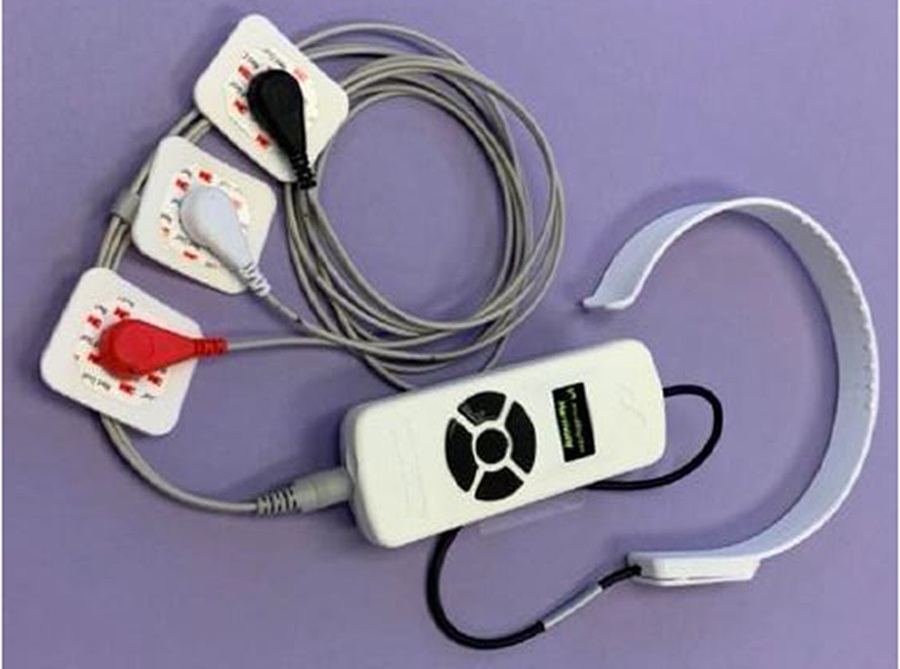Cranial Accelerometry Headset Enables Timely and Accurate Prehospital Detection of LVO Strokes
|
By HospiMedica International staff writers Posted on 22 Nov 2024 |

Large-vessel occlusion (LVO) strokes account for one-third of acute ischemic stroke (AIS) cases in the United States and are responsible for two-thirds of poststroke disability and 90% of stroke-related mortality. The introduction of endovascular thrombectomy (EVT) has significantly improved the management of LVO strokes in recent years, underscoring the critical need for quick identification and transport to hospitals capable of performing EVT. Despite these advancements, accurate prehospital detection of LVO strokes remains a major challenge. A new study now explores the feasibility of using cranial accelerometry (CA) headsets to detect LVO strokes in the prehospital setting.
In the EPISODE-PS-COVID study, researchers from Wayne State University School of Medicine (WSUSOM, Detroit, MI, USA) evaluated the feasibility of MindRhythm’s (Cupertino, CA, USA) Harmony 5000 CA headset for identifying LVO stroke in prehospital suspected stroke patients. CA technology works by detecting cranial forces generated by cardiac contractions to identify patterns indicative of LVO strokes. The Harmony 5000 device, a headband with three leads and a handheld screen, has already demonstrated high sensitivity and specificity in emergency department and neuro-interventional settings.
The study enrolled 594 participants, including 183 who used the second-generation device. Usable data were obtained from 158 patients (86.3%). The cohort was 53% female and 56% Black/African American, with a median age of 69 years. Of the participants, 26 (16.4%) had LVO strokes, while 132 (83.6%) did not (33 with non-LVO AIS, nine with intracerebral hemorrhage, and 90 with stroke mimics). The study also reported no significant differences in COVID-19 positivity rates between the groups (10.6%). The researchers found a sensitivity of 38.5% and specificity of 82.7% for the LAMS ≥ 4 method in detecting LVO strokes, compared to a sensitivity of 84.6% (p < 0.0015 for superiority) and specificity of 82.6% (p = 0.81 for superiority) for the device’s CA + LAMS algorithm. Published in Academic Emergency Medicine, these findings demonstrate that using the CA device to capture adequate data in prehospital settings is feasible, marking a significant step forward in stroke management.
“The EPISODE-PS-COVID study is, to our knowledge, the first to evaluate the use of a cranial accelerometry device for LVO stroke detection in prehospital settings,” said James H. Paxton, MD, MBA, from the Department of Emergency Medicine at WSUSOM who led the study.
Related Links:
WSUSOM
MindRhythm
Latest Critical Care News
- Novel Intrabronchial Method Delivers Cell Therapies in Critically Ill Patients on External Lung Support
- Generative AI Technology Detects Heart Disease Earlier Than Conventional Methods
- Wearable Technology Predicts Cardiovascular Risk by Continuously Monitoring Heart Rate Recovery
- Wearable Health Monitoring Device Measures Gases Emitted from and Absorbed by Skin
- Groundbreaking Technology Rapidly Detects Airborne Influenza Viruses
- Handheld Device Could Transform Heart Disease Screening
- Flexible Semi-Autonomous Robot Could Deliver Medicine Inside Body

- Neurorestorative Treatment Strategies Hold Promise for Most Severe Forms of Epilepsy
- Gene Discovery Could Help Grow New Heart Arteries
- Study Discovers Invisible Transmission of Common Hospital-Associated Infection
- Non-Invasive Neuro-Ophthalmology Techniques Could Detect Brain Tumors Earlier
- Mass Manufactured Nanoparticles to Deliver Cancer Drugs Directly to Tumors
- World’s Smallest Pacemaker Fits Inside Syringe Tip

- AI-Powered, Internet-Connected Medical Devices to Revolutionize Healthcare, Finds Study
- Starfish-Inspired Wearable Tech Enables Smarter Heart Monitoring
- AI Eye Scans Could Help Identify Heart Disease and Stroke Risk
Channels
Surgical Techniques
view channel
Intravascular Imaging for Guiding Stent Implantation Ensures Safer Stenting Procedures
Patients diagnosed with coronary artery disease, which is caused by plaque accumulation within the arteries leading to chest pain, shortness of breath, and potential heart attacks, frequently undergo percutaneous... Read more
World's First AI Surgical Guidance Platform Allows Surgeons to Measure Success in Real-Time
Surgeons have always faced challenges in measuring their progress toward surgical goals during procedures. Traditionally, obtaining measurements required stepping out of the sterile environment to perform... Read morePatient Care
view channel
Portable Biosensor Platform to Reduce Hospital-Acquired Infections
Approximately 4 million patients in the European Union acquire healthcare-associated infections (HAIs) or nosocomial infections each year, with around 37,000 deaths directly resulting from these infections,... Read moreFirst-Of-Its-Kind Portable Germicidal Light Technology Disinfects High-Touch Clinical Surfaces in Seconds
Reducing healthcare-acquired infections (HAIs) remains a pressing issue within global healthcare systems. In the United States alone, 1.7 million patients contract HAIs annually, leading to approximately... Read more
Surgical Capacity Optimization Solution Helps Hospitals Boost OR Utilization
An innovative solution has the capability to transform surgical capacity utilization by targeting the root cause of surgical block time inefficiencies. Fujitsu Limited’s (Tokyo, Japan) Surgical Capacity... Read more
Game-Changing Innovation in Surgical Instrument Sterilization Significantly Improves OR Throughput
A groundbreaking innovation enables hospitals to significantly improve instrument processing time and throughput in operating rooms (ORs) and sterile processing departments. Turbett Surgical, Inc.... Read moreHealth IT
view channel
Printable Molecule-Selective Nanoparticles Enable Mass Production of Wearable Biosensors
The future of medicine is likely to focus on the personalization of healthcare—understanding exactly what an individual requires and delivering the appropriate combination of nutrients, metabolites, and... Read more
Smartwatches Could Detect Congestive Heart Failure
Diagnosing congestive heart failure (CHF) typically requires expensive and time-consuming imaging techniques like echocardiography, also known as cardiac ultrasound. Previously, detecting CHF by analyzing... Read moreBusiness
view channel
Expanded Collaboration to Transform OR Technology Through AI and Automation
The expansion of an existing collaboration between three leading companies aims to develop artificial intelligence (AI)-driven solutions for smart operating rooms with sophisticated monitoring and automation.... Read more

















